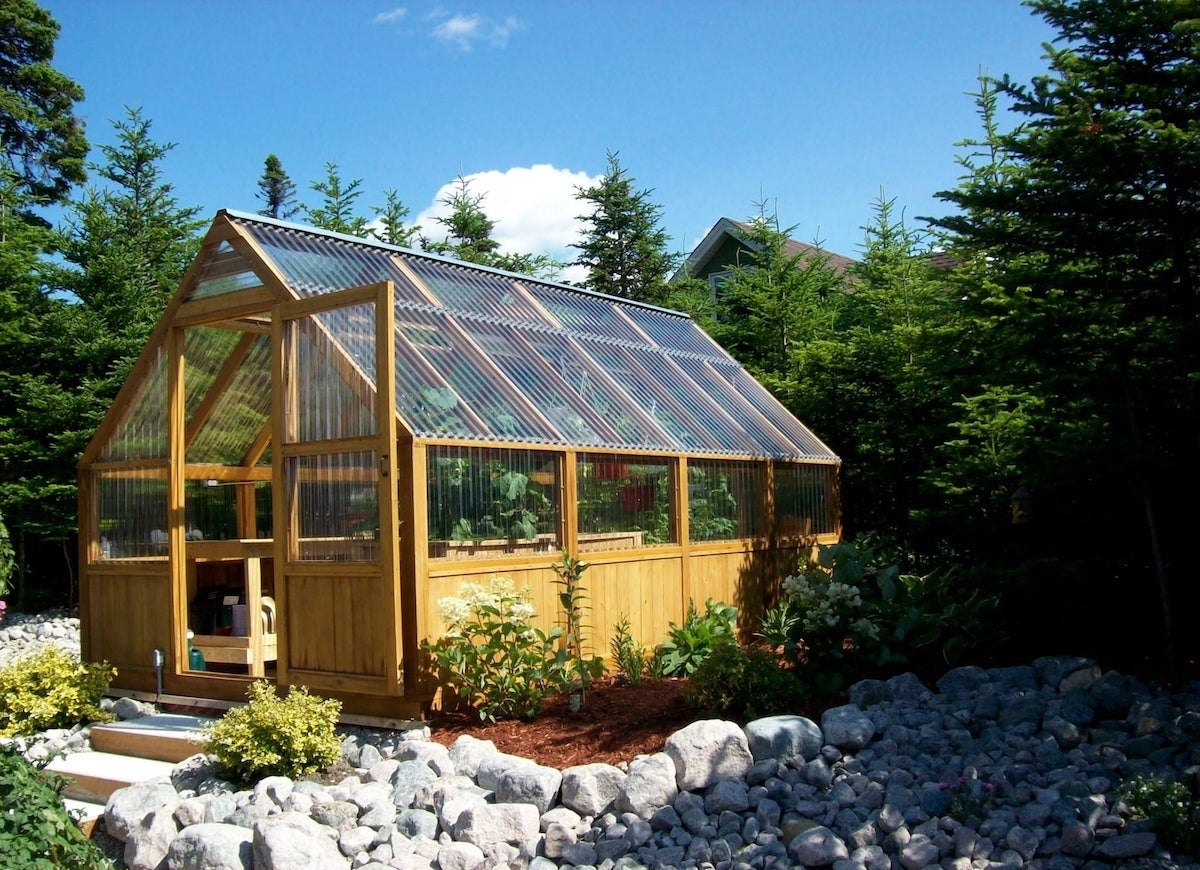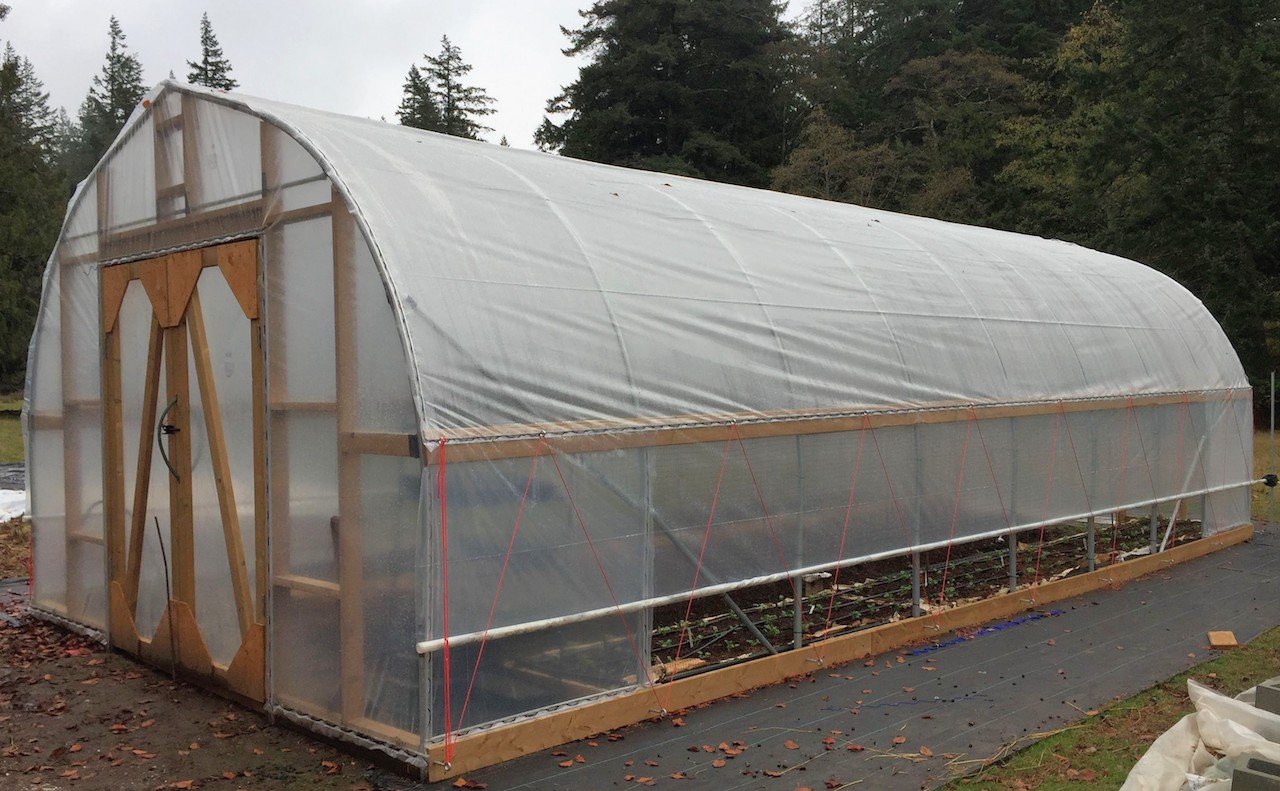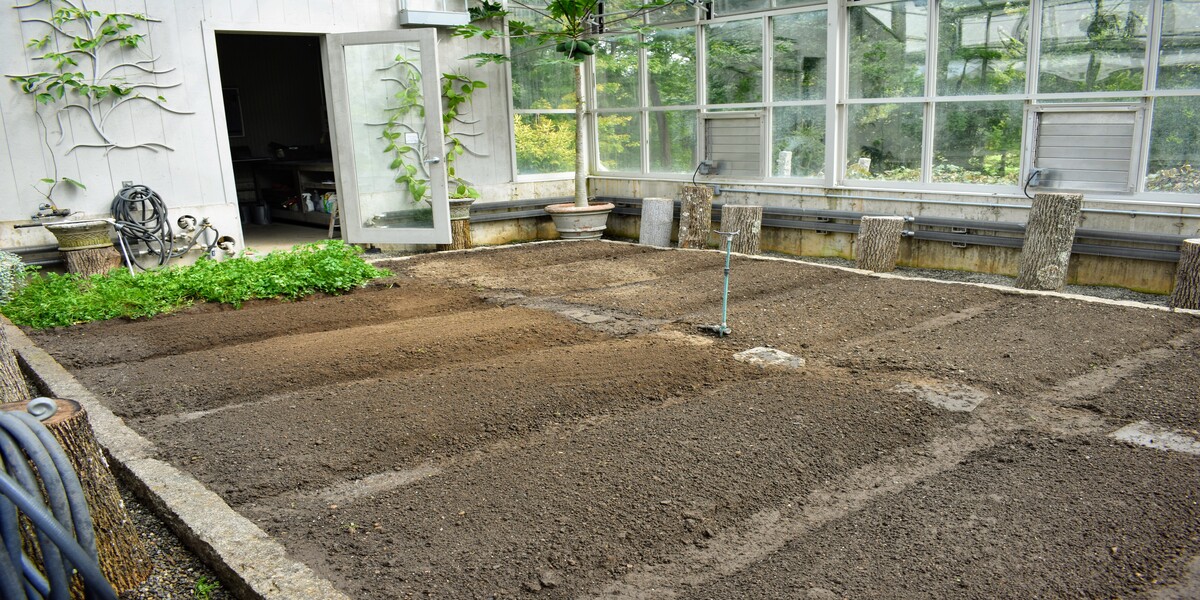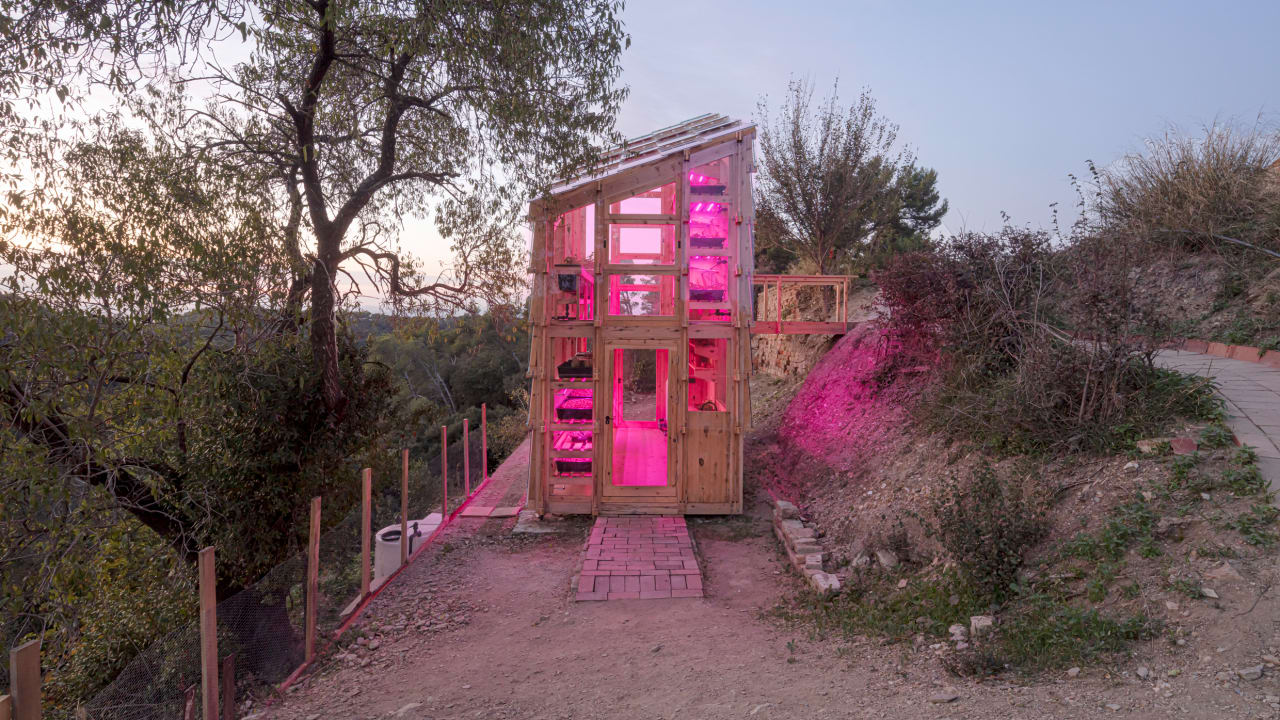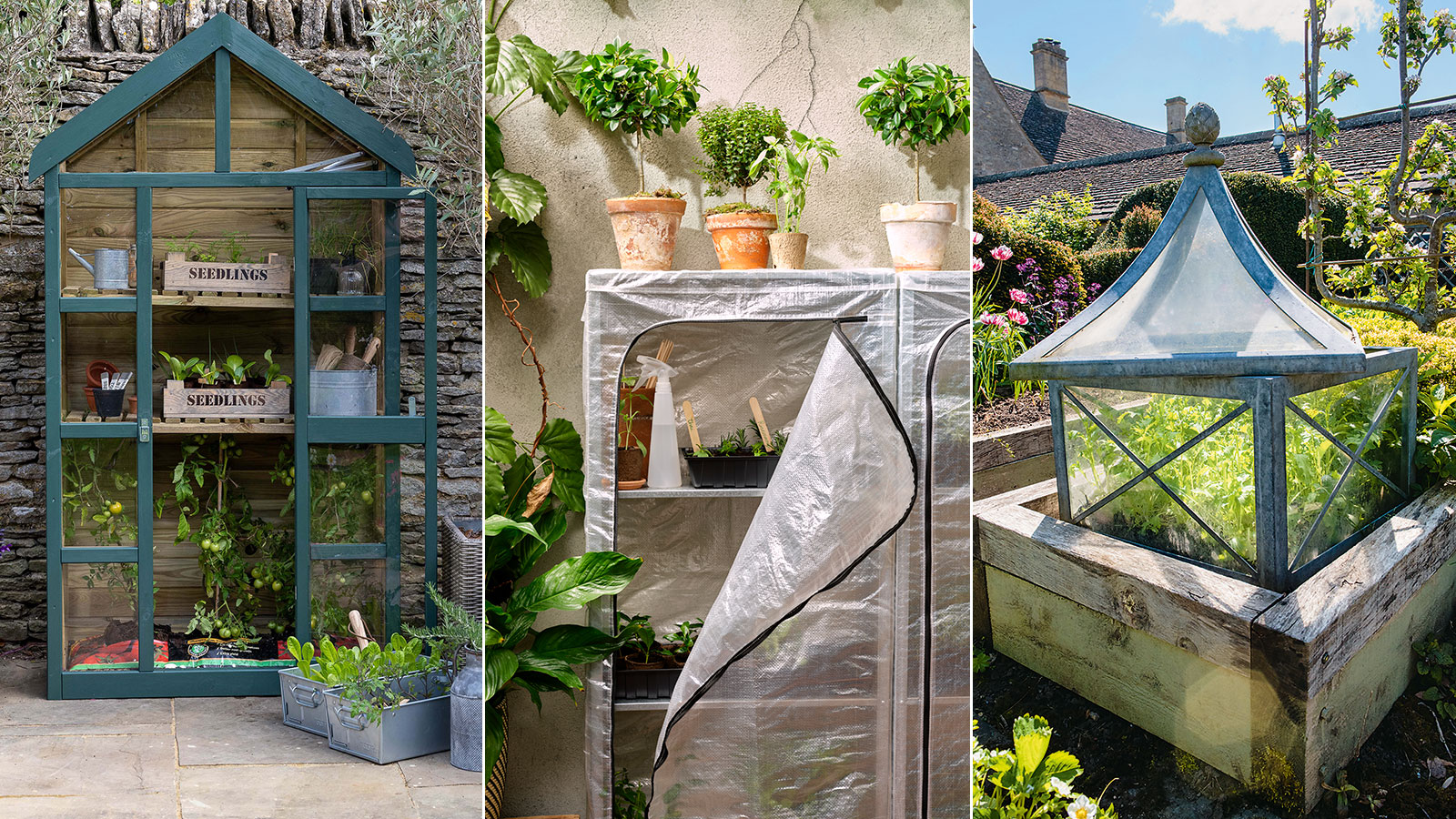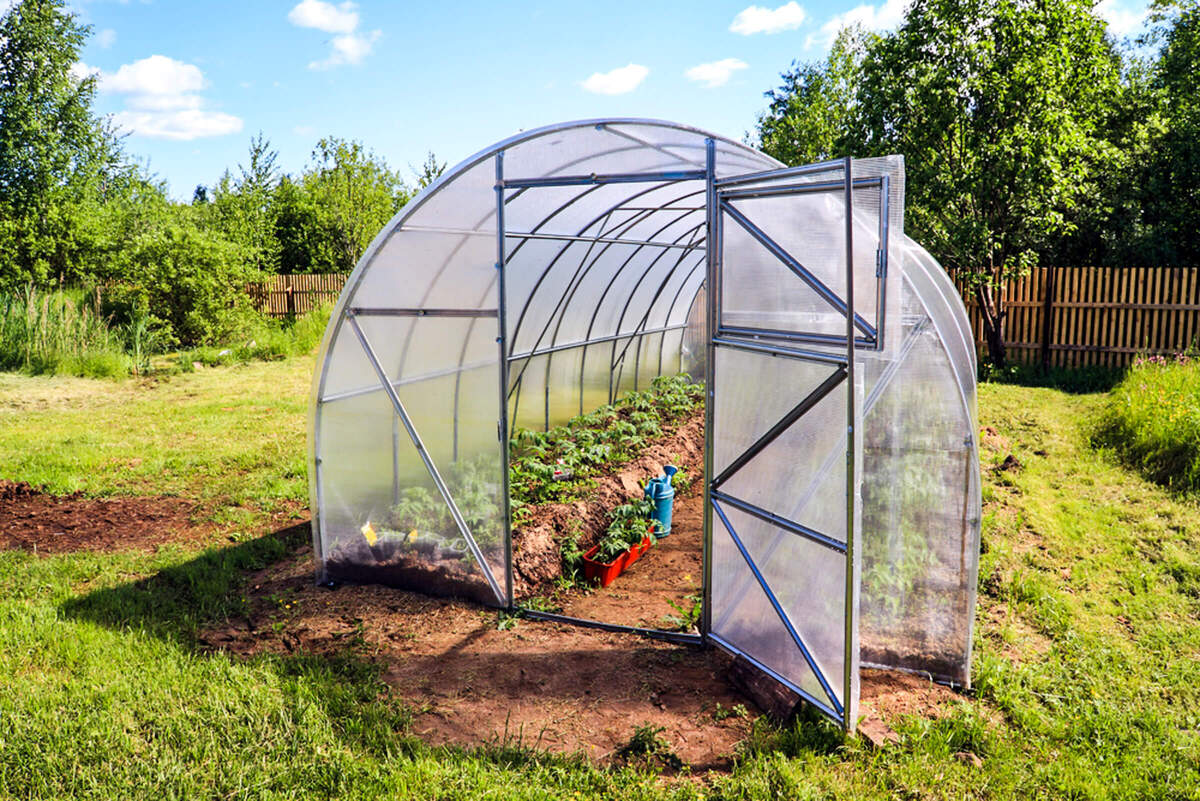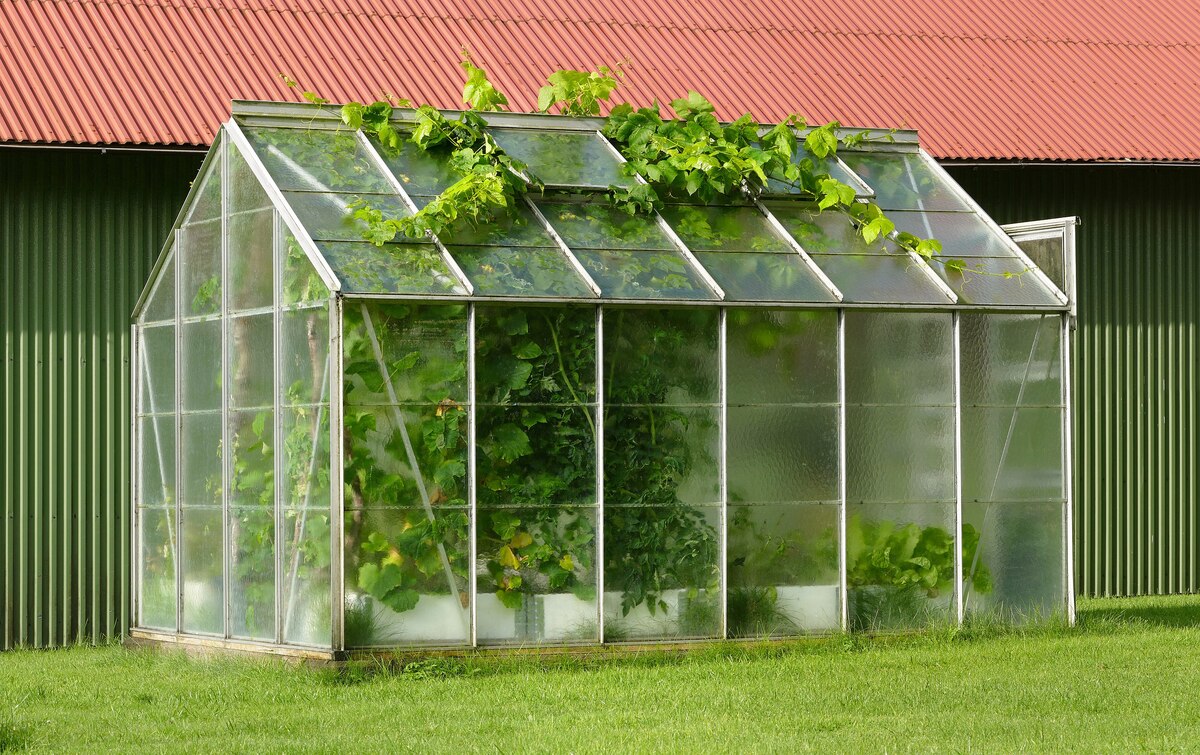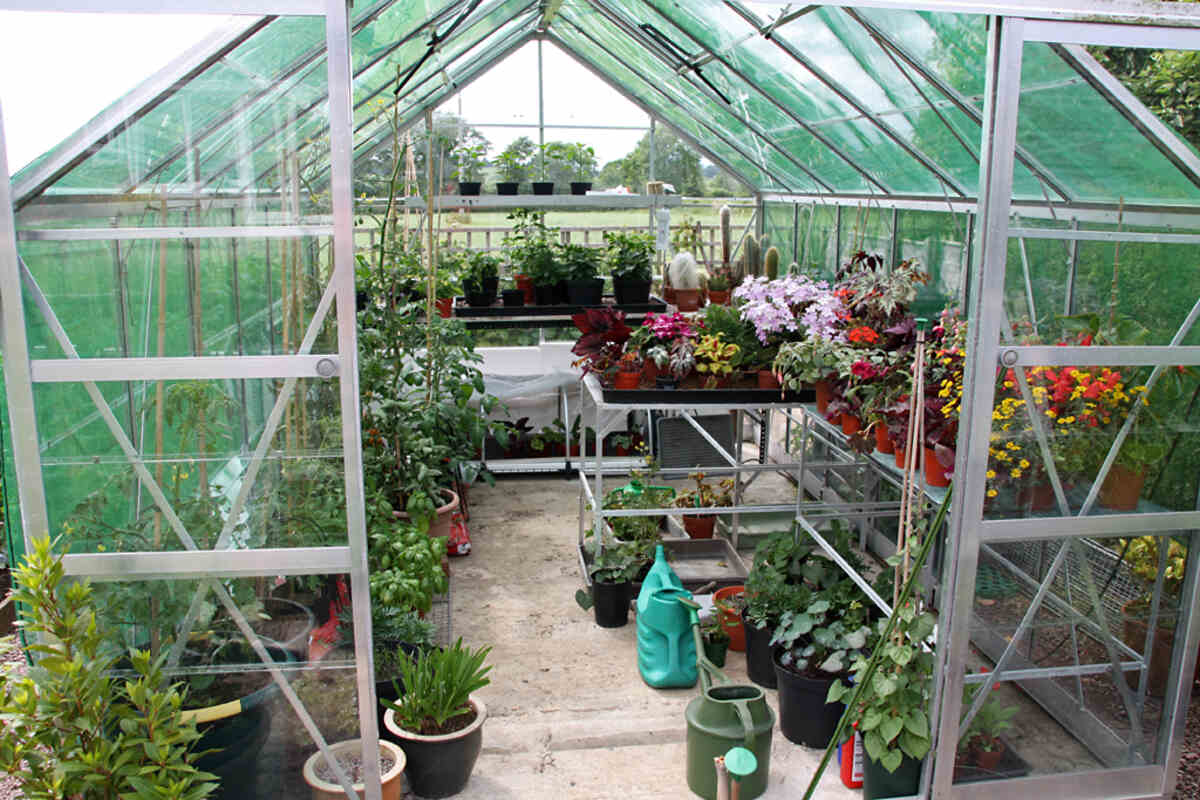Home>Gardening Tips and Tricks>How To Build A Greenhouse Ark


Gardening Tips and Tricks
How To Build A Greenhouse Ark
Modified: January 22, 2024
Learn effective problem-solving techniques for building a greenhouse ark with our comprehensive guide. Discover step-by-step instructions and expert tips to create an eco-friendly structure.
(Many of the links in this article redirect to a specific reviewed product. Your purchase of these products through affiliate links helps to generate commission for Chicagolandgardening.com, at no extra cost. Learn more)
Table of Contents
- Introduction
- Benefits of Building a Greenhouse Ark
- Choosing the Right Location
- Selecting the Materials
- Building the Foundation
- Constructing the Frame
- Installing the Roofing
- Adding Doors and Windows
- Ventilation and Insulation
- Setting up the Irrigation System
- Creating the Ideal Environment
- Maintaining and Caring for Your Greenhouse Ark
- Conclusion
Introduction
Welcome to the world of greenhouse gardening! Whether you are a seasoned gardener or just starting out, building a greenhouse ark can be a rewarding and enriching project. A greenhouse ark is a structure that provides a controlled environment for plants to thrive, allowing you to extend your growing season and have a bountiful harvest all year round.
Building a greenhouse ark offers numerous benefits, from protecting your plants from harsh weather conditions to creating the perfect growing conditions for delicate and exotic plants. Not only does it provide a sanctuary for your plants, but it also enhances the aesthetic appeal of your garden and adds value to your property.
As you embark on this exciting endeavor, it’s important to understand the key factors involved in constructing a greenhouse ark. This comprehensive guide will walk you through the essential steps, from choosing the right location to maintaining and caring for your greenhouse ark.
Before we dive into the construction process, let’s explore some of the benefits of building a greenhouse ark. By understanding the advantages, you’ll be inspired to get started on this green-thumb adventure!
Benefits of Building a Greenhouse Ark
Building a greenhouse ark offers a multitude of benefits, making it a worthwhile investment for both novice and experienced gardeners. Here are some of the key advantages:
- Extended Growing Season: With a greenhouse ark, you can extend your growing season significantly. By creating a controlled environment, you can start your plants earlier in the spring and continue growing them well into the fall, or even throughout the year in some climates. This means enjoying fresh produce and blooms outside of the regular growing season.
- Protection from Extreme Weather: Harsh weather conditions, such as frost, high winds, or heavy rain, can damage or destroy your plants. A greenhouse ark acts as a protective shield, shielding your plants from these elements and ensuring their well-being. It provides a stable and regulated environment for your plants to thrive.
- Versatility: A greenhouse ark offers versatility in plant choices. You can grow a wide variety of plants, including delicate and exotic species that may not survive in your local climate. This opens up a whole new world of possibilities for your garden, allowing you to experiment with different plant types and grow a diverse range of fruits, vegetables, flowers, and herbs.
- Pest and Disease Control: Greenhouse arks provide a barrier against pests, reducing the risk of infestations and diseases that can harm your plants. With proper ventilation and diligence in maintaining cleanliness, you can create a healthy environment that minimizes the use of chemical pesticides or fungicides.
- Increased Productivity: The controlled environment of a greenhouse ark allows your plants to grow faster and more efficiently. The combination of optimal temperature, humidity, and lighting conditions provides the ideal growing conditions, resulting in faster growth and higher yield. This increased productivity means a greater quantity and quality of produce for you to enjoy.
- Year-Round Gardening: By having a greenhouse ark, you can indulge in gardening all year round. You are not limited by the seasons or weather conditions, giving you the opportunity to indulge in your passion for gardening no matter the time of year. The ability to garden year-round is particularly beneficial for those in colder climates, where the growing season is limited.
These are just a few of the many benefits that come with building a greenhouse ark. Embarking on this project will not only enhance your gardening experience but also provide you with a productive and enjoyable space to nurture your plants and create a thriving garden.
Choosing the Right Location
Choosing the right location for your greenhouse ark is crucial, as it can greatly affect the success of your gardening endeavors. Here are some key factors to consider when selecting the location:
- Sunlight Exposure: A greenhouse ark requires ample sunlight to provide the necessary energy for plant growth. Choose a location that receives the maximum amount of sunlight throughout the day, preferably facing south or southeast. Avoid areas with excessive shade from trees, buildings, or other structures that may obstruct sunlight.
- Access to Water and Electricity: Ensure that your chosen location is easily accessible to a water source for irrigation and a power supply for electrical equipment such as fans, heaters, or lighting. Having these resources nearby will make it more convenient to maintain and operate your greenhouse ark.
- Level Ground: Select a location that has level ground or can be easily leveled. Uneven ground can cause structural instability and hinder the proper functioning of your greenhouse ark. Avoid areas prone to waterlogging or areas with poor drainage, as excessive moisture can be detrimental to your plants.
- Wind Exposure: Consider the wind patterns in your area when choosing the location. Strong winds can damage or even destroy your greenhouse ark. Look for a spot that is sheltered or protected, such as near a building or natural windbreaks like hedges or trees.
- Proximity to Your Home: Selecting a location that is close to your home is beneficial for easy access and monitoring. It will be more convenient to tend to your plants, check on their progress, and make any adjustments or repairs as needed.
- Local Building Regulations: Familiarize yourself with the local building regulations and permits required for constructing a greenhouse ark. Ensure that your chosen location complies with these regulations to avoid any legal issues in the future.
Take the time to assess different potential locations in your garden and consider the factors mentioned above. By choosing the right location, you’ll provide an optimal environment for your plants, ultimately leading to successful and satisfying greenhouse gardening.
Selecting the Materials
Selecting the right materials for your greenhouse ark is essential in ensuring its durability, efficiency, and functionality. Here are some factors to consider when choosing the materials:
- Frame Materials: The frame of your greenhouse ark forms the structural foundation. Common materials for framing include wood, aluminum, steel, or PVC. Each material has its advantages and disadvantages in terms of cost, durability, and aesthetic appeal. Consider factors such as your budget, the local climate, and the desired longevity of your greenhouse ark when deciding on the frame material.
- Glazing Materials: The glazing refers to the transparent covering of your greenhouse ark, allowing sunlight to enter while retaining heat. Common glazing options include glass, polycarbonate, or polyethylene film. Glass offers excellent durability and visibility but can be more expensive. Polycarbonate is lightweight, durable, and provides good insulation. Polyethylene film is affordable and allows for diffused light but may need to be replaced periodically.
- Insulation: Insulation is crucial for regulating temperature and reducing heat loss in the greenhouse ark. Consider using materials such as thermal blankets, bubble wrap, or foam panels to provide insulation. Insulate the walls, roof, and even the foundation to create a more stable and energy-efficient environment for your plants.
- Door and Window Materials: Choose sturdy and weather-resistant materials for your greenhouse ark’s doors and windows. Consider options like reinforced glass, polycarbonate, or PVC frames. Ensure that they provide a tight seal to prevent drafts and maintain a controlled environment inside the greenhouse ark.
- Fasteners and Hardware: When assembling your greenhouse ark, opt for high-quality fasteners and hardware such as screws, bolts, and brackets. These elements are crucial in providing structural integrity and ensuring a secure and durable construction.
- Additional Accessories: Depending on your needs, you may want to invest in additional accessories such as shading systems, irrigation systems, ventilation fans, or heating systems. Consider the quality, efficiency, and compatibility of these accessories with your greenhouse ark and the plants you intend to grow.
When selecting materials, strike a balance between quality, cost-effectiveness, and suitability for your specific needs and budget. Research and compare different options, consulting experts if necessary, to make informed decisions on the materials that will best meet your requirements.
Building the Foundation
The foundation of your greenhouse ark is crucial for providing stability, ensuring proper drainage, and securing the structure. Here are the key steps to follow when building the foundation:
- Site Preparation: Start by clearing the area where you plan to build the greenhouse ark. Remove any vegetation, rocks, or debris and level the ground as much as possible. Clearing the site will provide a stable and even surface for the foundation.
- Choosing the Foundation Type: There are various types of foundations to consider, including concrete, treated wood, or gravel. The choice depends on your budget, local building codes, and personal preference. Concrete is a popular and durable option, but it requires more time and effort to install. Treated wood can be a cost-effective and flexible alternative, while gravel allows for better drainage.
- Marking the Foundation: Once you have decided on the foundation type, mark the outline of the greenhouse ark on the prepared ground. Use stakes and string to create a clear outline of the dimensions. This will guide you during the foundation construction process.
- Excavation: If you have chosen a concrete foundation, dig a trench along the marked outline that is at least 4-6 inches deep. Ensure that the trench is level and follows the dimensions of the greenhouse ark. If you have opted for a wooden foundation, you can skip this step.
- Formwork: For a concrete foundation, construct formwork using wooden boards that will hold the wet concrete in place and define the shape of the foundation. Ensure that the formwork is level, straight, and matches the dimensions of the greenhouse ark. Use stakes to secure the formwork in place.
- Pouring Concrete or Assembling Wooden Foundation: If you have chosen a concrete foundation, pour the concrete mixture into the excavated trench, ensuring it is evenly spread. Use a trowel to level and smooth the surface. If you have opted for a wooden foundation, assemble the treated wood beams according to the marked outline, connecting them securely with nails or screws.
- Curing and Finishing: If you have poured a concrete foundation, allow it to cure for at least 24 hours before removing the formwork. This will ensure that the foundation sets properly. Once cured, remove the formwork and finish the foundation by adding a layer of sealant or waterproof membrane to protect it from moisture.
A strong and level foundation is essential for the stability and longevity of your greenhouse ark. Take the time to carefully construct the foundation, following the recommended steps, to ensure a solid base for your greenhouse structure.
Constructing the Frame
The frame of your greenhouse ark provides the structure and support for the entire building. Proper construction of the frame is crucial for stability and durability. Follow these steps to effectively construct the frame:
- Prepare the Materials: Gather all the necessary materials for the frame, including the chosen framing material (wood, aluminum, steel, or PVC), fasteners, and any additional reinforcement materials.
- Measure and Plan: Take accurate measurements of the foundation and plan the layout of the frame accordingly. This will ensure that the frame fits snugly onto the foundation and provides adequate space for doors, windows, and other desired features.
- Start with the Base: Begin constructing the frame by fixing the base components onto the foundation. This is usually done by attaching horizontal beams or tracks to the perimeter of the foundation, according to your planned measurements.
- Assemble the Uprights: After securing the base, attach vertical supports or uprights at regular intervals along the base, ensuring they are plumb (vertically straight) and securely fastened to the base components.
- Add Cross Bracing: Strengthen the frame by adding cross braces or diagonals between the uprights. These braces help distribute the load and provide stability, especially in areas prone to high winds or heavy snowfall.
- Install Roof Rafters or Arches: Depending on the design and shape of your greenhouse ark, install roof rafters or arched beams to form the roof structure. Ensure that they are evenly spaced and securely attached to the uprights.
- Secure Side Walls and End Walls: Attach the framing components for the side walls and end walls, ensuring they are level and plumb with the base and roof framework. Install additional supports as needed for stability.
- Verify Structural Integrity: Once the frame is assembled, check for any weak points or areas that need reinforcement. Ensure that the frame is sturdy and capable of withstanding external loads such as wind, snow, or the weight of the glazing materials.
During the construction process, follow the manufacturer’s instructions for the specific framing materials and consider consulting with experts if necessary. A well-constructed frame is essential for the overall integrity and longevity of your greenhouse ark, providing a solid structure to support the glazing materials and other components.
Installing the Roofing
Installing the roofing of your greenhouse ark is a critical step in creating a weather-resistant and efficient environment for your plants. Follow these important steps to properly install the roofing:
- Prepare the Roofing Materials: Gather all the necessary roofing materials, such as glass panels, polycarbonate sheets, or polyethylene film. Ensure that they are cut to the appropriate size for your greenhouse ark.
- Clean and Prepare the Frame: Before installing the roofing materials, ensure that the frame is clean and free from any debris. Clear away any dust, dirt, or loose fasteners that may hinder the proper installation of the roofing.
- Start from the Bottom: Begin installing the roofing from the bottom of the greenhouse ark and work your way up. This will allow for easier installation and ensure that each layer overlaps the one below it, creating a watertight seal.
- Secure Glass Panels or Polycarbonate Sheets: If you are using glass panels or polycarbonate sheets, attach them to the frame using appropriate clips, screws, or channels, following the manufacturer’s instructions. Ensure that they are properly aligned and tightly secured to prevent leaks or damage from strong winds.
- Secure Polyethylene Film: If you are using polyethylene film, carefully unroll it over the frame, making sure it covers the entire roof surface. Secure the film to the frame using batten strips, staples, or specialized fasteners designed for polyethylene film. Pull the film tightly to eliminate any sagging or wrinkles.
- Seal Joints and Edges: To create a watertight seal, use appropriate sealants or weatherproof tape to seal the joints and edges of the roofing materials. This will prevent water infiltration and help maintain a stable and dry environment inside the greenhouse ark.
- Install Skylights or Vents: If desired, install skylights or vents in the roof to provide additional ventilation and regulate temperature inside the greenhouse ark. Ensure that these features are properly sealed to prevent leaks or drafts.
- Verify Stability and Water Drainage: Once the roofing is installed, check for stability and ensure that the roof has a proper slope for water drainage. This will prevent water from pooling on the roof and potentially causing damage.
Take care to follow the manufacturer’s instructions and best practices when installing the roofing materials. A well-installed roof will not only protect your plants from the elements but also provide adequate sunlight and ventilation for their healthy growth.
Adding Doors and Windows
Doors and windows are essential components of a greenhouse ark, providing access, ventilation, and natural light. Here are the steps to effectively add doors and windows to your greenhouse ark:
- Select Appropriate Doors and Windows: Choose doors and windows that are designed specifically for greenhouse use. They should be durable, weather-resistant, and provide good insulation.
- Plan the Placement: Determine the optimal locations for doors and windows in your greenhouse ark. Consider factors such as sunlight exposure, ventilation, and accessibility. Ideally, place doors at the end walls for easy access and position windows along the sides for proper air circulation.
- Prepare the Openings: Based on your planned placement, measure and mark the locations for doors and windows on the greenhouse ark structure. Ensure that the openings are appropriate in size and shape to accommodate the chosen doors and windows.
- Install the Doors: Begin by installing the doors. Follow the manufacturer’s instructions for your specific door type, whether it’s a hinged door or a sliding door. Ensure that the doors are properly aligned, level, and securely attached to the frame.
- Install the Windows: Once the doors are in place, proceed to install the windows. Depending on the design of your greenhouse ark, you may have fixed windows or operable windows that can be opened and closed. Attach the windows securely, using the recommended hardware and following the manufacturer’s instructions.
- Test Functionality: Verify that the doors and windows open and close smoothly without any obstructions. Ensure that they create a tight seal when closed to prevent drafts and maintain the desired environment inside the greenhouse ark.
- Add Weatherproofing: To enhance insulation and weatherproofing, apply weatherstripping or caulk around the edges of the doors and windows. This will help seal any gaps and prevent the infiltration of air, moisture, or pests.
- Consider Additional Features: Depending on your needs and preferences, you may want to incorporate additional features, such as automatic vents, screens, or shading systems. These add-ons can enhance the functionality, convenience, and efficiency of your greenhouse ark.
When adding doors and windows to your greenhouse ark, attention to detail and proper installation are vital. Carefully follow the manufacturer’s instructions and ensure that the doors and windows are secure, well-sealed, and operate smoothly. This will contribute to a well-functioning and comfortable greenhouse environment for your plants.
Ventilation and Insulation
Ventilation and insulation are essential factors in maintaining a healthy and thriving environment for your plants within the greenhouse ark. Follow these important steps to ensure adequate ventilation and insulation:
- Natural Ventilation: Utilize natural ventilation by incorporating windows, vents, or louvers into the design of your greenhouse ark. These openings can be strategically placed to maximize airflow and regulate temperature. Consider using adjustable vents or automatic vent openers to allow for automatic temperature control.
- Circulation Fans: Install circulation fans to enhance air movement inside the greenhouse ark. Proper air circulation helps prevent the buildup of stagnant air, minimizes the risk of mold or disease, and ensures even distribution of temperature and humidity.
- Shading Systems: Use shading systems, such as shade cloth or blinds, to control the amount of sunlight and prevent heat buildup during hot periods. These shading systems can be manually or automatically operated, allowing you to adjust the level of shading depending on the weather conditions.
- Insulation: Insulate the walls, roof, and foundation of your greenhouse ark to regulate temperature and minimize heat loss or gain. Use insulation materials such as foam panels, thermal blankets, or bubble wrap to create a barrier against extreme temperatures. Consider the climate in your area and choose insulation that suits the specific needs of your greenhouse ark.
- Weatherstripping: Install weatherstripping around doors, windows, and any other potential gaps in the greenhouse ark. Weatherstripping helps create a tight seal and prevent drafts, maintaining a stable and controlled environment inside the greenhouse.
- Monitoring and Adjusting: Regularly monitor the temperature, humidity, and airflow within the greenhouse ark. Use thermometers, humidity gauges, and other monitoring devices to assess conditions. Adjust the ventilation, shading, and insulation accordingly to create the ideal environment for your plants.
- Consider Heating and Cooling Systems: In regions with extreme temperature variations, you may need to install heating or cooling systems to maintain optimal conditions inside the greenhouse ark. These systems can include heaters, evaporative coolers, or air conditioning units.
Proper ventilation and insulation are crucial for promoting healthy plant growth and preventing issues such as mold, disease, or heat stress. By implementing these practices, you can create a balanced and stable environment within your greenhouse ark, supporting the growth and well-being of your plants.
Setting up the Irrigation System
An efficient and properly designed irrigation system is vital for providing your plants with the necessary water they need for healthy growth. Here are the key steps to set up an effective irrigation system in your greenhouse ark:
- Assess Water Source: Determine your water source and its proximity to the greenhouse ark. Ensure that the water source is easily accessible and can provide a sufficient supply of water for your plants.
- Choose an Irrigation Method: Select the most suitable irrigation method for your greenhouse ark, considering factors such as the type of plants, your schedule, and the resources available. Common methods include drip irrigation, sprinkler systems, or misting systems.
- Design the Layout: Plan the layout of the irrigation system, taking into account the greenhouse’s size, shape, and the distribution of plants. Consider the specific water requirements for different areas or plant types and ensure that the system provides uniform coverage.
- Install Main Water Line: Begin by installing a main water line that connects your water source to the greenhouse ark. Use high-quality pipes or hoses that are durable and suitable for irrigation purposes. Ensure that the line is properly buried or protected to prevent damage.
- Install Emitters or Sprinklers: Depending on the chosen irrigation method, install emitters or sprinklers at appropriate intervals throughout the greenhouse ark. Position them close to the root zones of plants, ensuring that they provide even and targeted water distribution.
- Consider Timers or Automated Systems: Incorporate timers or automated systems into your irrigation setup to provide efficient and consistent watering. These systems can be programmed to deliver water at specific times or intervals, ensuring that your plants receive water even when you are not present.
- Monitor and Adjust: Regularly monitor the moisture levels of the soil and observe the health of your plants. Adjust the irrigation system as needed, taking into account weather conditions, plant growth stages, and specific water requirements.
- Prevent Water Waste: Implement measures to prevent water waste, such as proper scheduling, using water-efficient irrigation methods, and minimizing runoff. Consider collecting and reusing rainwater or using a recirculating system to optimize water usage.
Setting up an efficient irrigation system will provide your plants with a consistent and appropriate water supply, promoting healthy growth and reducing the risk of overwatering or underwatering. Regular maintenance and monitoring of the irrigation system will ensure its continued effectiveness in supporting your plant’s needs.
Creating the Ideal Environment
Creating the ideal environment within your greenhouse ark is crucial for maximizing plant growth and productivity. Here are the key factors to consider when striving for the ideal environment:
- Temperature Control: Maintain the optimal temperature range for your plants by utilizing proper insulation, ventilation, and heating systems. Monitor and adjust the temperature as needed, ensuring that it remains within the ideal range for your specific plant varieties.
- Humidity Regulation: Provide the right level of humidity for your plants by considering their individual needs. Use circulating fans or humidifiers to adjust the humidity levels within the greenhouse ark. Proper moisture control helps prevent disease and promotes healthy plant growth.
- Lighting Conditions: Ensure that your plants receive adequate sunlight or artificial lighting. Assess the amount and intensity of light needed by your specific plant varieties and adjust accordingly. Supplemental lighting can be used during periods of low sunlight or extended growing seasons.
- Air Circulation: Promote proper air circulation within the greenhouse ark to prevent stagnant air and potential disease issues. Use fans, vents, or natural ventilation methods to keep the air moving and create an optimal growing environment for your plants.
- CO2 Enrichment: Consider supplementing the carbon dioxide (CO2) levels within the greenhouse ark. Increasing CO2 can enhance plant growth, especially in enclosed environments. Utilize controlled-release systems or CO2 generators to maintain the desired CO2 concentration.
- Pest and Disease Control: Implement a pest management strategy to prevent and control common pests and diseases. Regularly monitor plants for signs of infestation or illness and take prompt action to mitigate these issues. Use organic pest control methods whenever possible to minimize chemical exposure.
- Proper Plant Spacing: Provide adequate space between plants to allow for proper growth and airflow. Overcrowding can lead to increased disease susceptibility and poor airflow, while proper spacing promotes healthy development and reduces the risk of pest and disease problems.
- Monitoring and Record-Keeping: Maintain records of environmental parameters such as temperature, humidity, lighting, and nutrient levels. Regularly monitor these factors and adjust as necessary to create an optimal environment for your plants. Recording and tracking data can help identify patterns and optimize future growing conditions.
Creating the ideal environment for your plants requires careful attention to the various factors that influence their growth. By focusing on temperature control, humidity regulation, lighting, air circulation, and pest management, you can provide the best conditions for your plants to thrive and ensure a successful and bountiful harvest.
Maintaining and Caring for Your Greenhouse Ark
Maintaining and caring for your greenhouse ark is essential to ensure its longevity and the healthy growth of your plants. Here are some key maintenance tasks and care practices to keep in mind:
- Cleanliness: Regularly clean the interior and exterior of your greenhouse ark to remove debris, dust, and dirt. This will help maintain good air quality, prevent pest infestations, and ensure optimal light transmission.
- Pest and Disease Management: Inspect your plants regularly for signs of pests or diseases, such as wilting, discoloration, or unusual spots. Take immediate action to treat infected plants and prevent the spread to other healthy plants. Use organic pest control methods whenever possible to minimize chemical exposure.
- Irrigation System Maintenance: Check the irrigation system regularly to ensure proper functioning. Clean or replace clogged emitters, adjust water pressure, and monitor the moisture levels of the soil to prevent overwatering or underwatering.
- Pruning and Training: Prune and train your plants to promote healthy growth and proper structure. Remove dead or damaged plant parts, pinch or trim excess foliage, and guide growth along trellises or supports. Regular pruning helps improve air circulation and reduces the risk of pest and disease problems.
- Fertilization and Nutrient Management: Monitor the nutrient levels of your plants and provide appropriate fertilization. Use organic or slow-release fertilizers to maintain a balanced nutrient supply. Adjust fertilization based on the specific needs of different plant varieties and growth stages.
- Weed Control: Regularly remove weeds from both inside and outside your greenhouse ark. Weeds compete for resources and can harbor pests or diseases. Use mulching or other weed control methods to prevent weed growth.
- Monitor Environmental Conditions: Continuously monitor and maintain optimal environmental conditions within the greenhouse ark. Regularly check temperature, humidity, light levels, and airflow. Adjust settings or make necessary modifications to ensure a healthy and stable growing environment.
- Regular Inspections: Conduct routine inspections of the greenhouse ark’s structure. Check for any signs of damage, such as cracks, leaks, loose fasteners, or worn-out components. Promptly repair or replace any damaged parts to maintain structural integrity.
- Document and Learn: Keep a record of your greenhouse ark activities, including observations, maintenance tasks, and any experiments or changes made. This documentation will help you track progress, learn from previous experiences, and make informed decisions for future improvements.
Maintaining and caring for your greenhouse ark requires regular attention and diligence. By following these practices, you can ensure the health and vitality of your plants, prolong the life of your greenhouse ark, and enjoy successful gardening seasons for years to come.
Conclusion
Building and maintaining a greenhouse ark is an exciting and rewarding endeavor that opens up a world of possibilities for your gardening journey. By following the steps outlined in this guide, you can create a controlled and ideal environment for your plants to thrive.
From choosing the right location and selecting the materials to constructing the frame, installing the roofing, and adding doors and windows, every step plays a crucial role in the overall success of your greenhouse ark. Proper ventilation, insulation, irrigation, and pest control are paramount to creating a thriving and healthy plant ecosystem.
Maintaining and caring for your greenhouse ark requires dedication and regular upkeep. Regular cleaning, pest management, monitoring environmental conditions, and conducting routine inspections will help ensure the longevity of your greenhouse ark and the vitality of your plants.
Remember, a greenhouse ark is not only a practical structure for extending your growing season and protecting your plants, but it’s also a space for creativity, experimentation, and the joy of gardening. Embrace the opportunity to explore different plant varieties, indulge in year-round gardening, and witness the beauty of nature firsthand.
Enjoy the process of building and nurturing your greenhouse ark, and may it bring you many fruitful harvests and years of gardening fulfillment.
